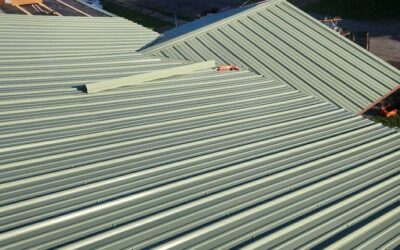What Are Leaf Filters and How Are They Used on Roofs?
Introduction
When it comes to maintaining your home, your roof is one of the most important aspects to care for. It protects you from the elements, regulates your home’s temperature, and can contribute significantly to your home’s curb appeal. However, maintaining a roof isn’t just about checking for damage or installing shingles—proper roof maintenance also involves addressing the buildup of debris. One of the most common problems homeowners face is clogged gutters due to fallen leaves and other debris. This is where leaf filters come into play.
But what exactly are leaf filters, and how are they used on roofs? In this blog, we’ll dive deep into understanding leaf filters, their purpose, how they work, their benefits, and how they can be installed to ensure your roof stays in top condition for years to come.
What Are Leaf Filters?
Leaf filters are protective devices designed to be installed over the top of gutters to prevent debris, such as leaves, twigs, and other organic matter, from clogging the gutters. These filters typically consist of mesh, foam, or other materials that allow water to flow into the gutter while blocking larger debris from entering. By doing so, they help prevent the buildup of debris that could lead to clogs, standing water, and potential damage to your roof, gutters, and even your home’s foundation.
Leaf filters come in a variety of designs, ranging from simple mesh screens to advanced gutter guard systems. They are often made from materials like stainless steel, aluminum, or plastic, ensuring durability and resistance to weather conditions.
Why Are Leaf Filters Important?
Gutters play a crucial role in protecting your home by directing rainwater away from your roof and foundation. However, over time, debris can accumulate in the gutters, causing them to become clogged. When this happens, water can overflow, leading to a range of problems such as:
- Water Damage: Clogged gutters can cause water to spill over the sides of the gutter system, which can damage the roof, siding, and foundation of your home. Over time, this can lead to costly repairs.
- Ice Dams: In colder climates, clogged gutters can result in ice dams. Ice dams occur when water backs up behind the debris and freezes, preventing proper drainage. This can cause significant damage to your roof and the interior of your home.
- Pest Infestation: Debris buildup in gutters can provide a breeding ground for pests like mosquitoes, rodents, and insects. These pests can create further issues within your home if left unchecked.
- Gutter Wear and Tear: The added weight of clogged debris can cause gutters to sag or even detach from the roof, leading to expensive repairs or replacements.
- Increased Maintenance: Without leaf filters, homeowners have to manually clean out their gutters regularly. This is time-consuming, dangerous (especially when working on ladders), and costly if you have to hire professional cleaning services.
By installing leaf filters, homeowners can prevent all of these issues, making them a worthwhile investment.
How Do Leaf Filters Work?
Leaf filters work by creating a barrier between your gutters and the debris that commonly clogs them. There are several types of leaf filters, but they all serve the same fundamental purpose: to allow water to flow freely through your gutters while blocking leaves and debris from entering. Here’s a closer look at how different types of leaf filters work:
1. Mesh Leaf Filters
Mesh leaf filters are made from fine mesh material, typically stainless steel or plastic, that sits over the top of your gutters. The mesh is designed to let water through while blocking larger debris such as leaves, pine needles, and twigs. Mesh filters can vary in thickness, with some offering finer mesh for blocking smaller particles.
The design of the mesh helps to prevent clogging while still allowing rainwater to flow into the gutters. Mesh filters are often one of the most affordable options, and their installation is straightforward. However, they may require periodic cleaning to remove debris that has collected on top of the mesh.
2. Foam Leaf Filters
Foam leaf filters are made from a porous foam material that fits directly into the gutter, acting as a sponge for water. The foam allows water to flow through it while trapping leaves and other debris on the surface. This type of filter is especially effective in preventing debris from entering the gutters, but it can also collect dirt and algae over time, which means occasional cleaning is necessary.
Foam filters are easy to install and can be a good option for homeowners looking for a low-maintenance solution. However, like mesh filters, foam filters can eventually degrade, especially when exposed to harsh weather conditions.
3. Brush Leaf Filters
Brush leaf filters resemble large pipe cleaners or brushes, and they sit inside the gutters to prevent debris from accumulating. These filters work by letting water flow through the gaps between the bristles, while the bristles catch leaves and other debris. Brush filters are effective at preventing large debris from blocking the gutters, but smaller debris like dirt or pine needles can sometimes get through.
Brush leaf filters are easy to install and maintain, and they are often used in combination with other filtering methods for enhanced protection.
4. Perforated Metal Leaf Filters
Perforated metal filters are made from a solid metal sheet that has small holes punched into it. These filters are designed to block larger debris while allowing water to flow through the holes and into the gutter system. Perforated metal filters are usually made from durable materials like aluminum or stainless steel, making them resistant to weathering and corrosion.
These filters can be customized to fit your gutter system and are often considered a more permanent solution compared to mesh or foam filters.
5. Reverse Curve Gutter Guards
Reverse curve gutter guards are a more advanced option that uses the principle of surface tension to direct water into the gutters while pushing debris off the edge. These guards are designed to allow water to flow over the top of the guard, using gravity and the angle of the surface to guide it into the gutter while leaves and debris are swept away.
Reverse curve systems are highly effective at keeping gutters clean, but they can be more expensive and may require professional installation.
Benefits of Leaf Filters
Installing leaf filters offers a range of benefits for homeowners, especially in areas with heavy rainfall or lots of trees. Here are some of the key advantages of using leaf filters:
1. Reduced Maintenance
One of the biggest benefits of leaf filters is the reduced maintenance required to keep your gutters clean. Without a filter, gutters need to be cleaned regularly, especially in areas with a lot of trees. This can be dangerous and time-consuming, but leaf filters help to prevent the need for frequent cleaning, saving you time and effort.
2. Protection Against Water Damage
By preventing debris from clogging the gutters, leaf filters help to ensure that water can flow freely through the system. This reduces the risk of water spilling over the sides of the gutters and causing water damage to your roof, walls, and foundation.
3. Prevention of Ice Dams
Leaf filters can help prevent the formation of ice dams by keeping gutters clear and allowing water to flow freely. Ice dams can cause significant damage to your roof and the interior of your home, but with a leaf filter in place, you can reduce the likelihood of this issue occurring.
4. Longer Gutter Lifespan
By keeping debris out of the gutters, leaf filters reduce the amount of wear and tear on your gutter system. This can help to extend the lifespan of your gutters, saving you money on repairs or replacements in the future.
5. Improved Curb Appeal
Clogged gutters can detract from your home’s appearance, especially if debris is spilling over the sides. With leaf filters, your gutters will stay cleaner, which helps to maintain your home’s curb appeal.
How to Install Leaf Filters
Installing leaf filters is a relatively straightforward process, although it can vary depending on the type of filter and the style of your gutters. Here are the basic steps for installing leaf filters:
- Clean Your Gutters: Before installing any leaf filters, make sure your gutters are clean and free of debris. This will ensure that the filters function properly.
- Choose the Right Filter: Select the type of leaf filter that best suits your gutter system and your needs. Consider factors like the climate, the amount of debris in your area, and your budget.
- Measure and Cut: Measure your gutters to determine the correct length of the filter. Most filters can be easily cut to size using household tools.
- Install the Filter: Depending on the type of filter, you may need to slide it into place or attach it with clips or screws. Make sure the filter is securely installed and covers the entire length of the gutter.
- Test the System: After installation, test the system by running water through the gutters to ensure that the filter is functioning properly and that water is flowing freely.
Conclusion
Leaf filters are an excellent solution for homeowners looking to protect their gutters from debris buildup and the associated damage that can occur as a result. Whether you choose a mesh, foam, brush, perforated metal, or reverse curve system, installing leaf filters can save you time and money in the long run by reducing maintenance, preventing water damage, and extending the lifespan of your gutters.
If you’re looking for a more efficient and low-maintenance way to keep your gutters clean and protect your roof, leaf filters are a smart investment that can help you maintain the integrity and functionality of your home’s gutter system for years to come.
At S&K Construction And Remodeling LLC, we specialize in roofing and gutter services in Youngstown, Cleveland, and the surrounding areas. As an Owens Corning Preferred Contractor, we are committed to delivering high-quality solutions for all your roofing and home improvement needs. If you’re ready to protect your roof and gutters with a reliable leaf filter system, contact us today to schedule an inspection or learn more about our services!
 (440) 307-2060
(440) 307-2060

